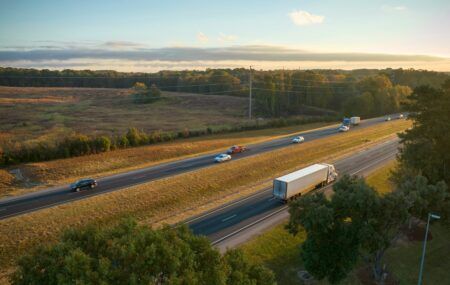A project combining Ordnance Survey (OS) geospatial data with real-time air quality data from EarthSense Systems is set to highlight clean bicycle routes in the UK’s cities.
Air pollution in the UK has been described as a ‘public health emergency’ and levels of nitrogen dioxide (NO?), emitted mostly by diesel vehicles, have been above legal limits in almost 90% of urban areas since 2010. Cycling to work has been promoted by the UK government as a way to reduce the number of cars on urban roads, with a recent survey showing that more than two million adults are now regularly cycling.
Using a network of fixed and static air pollution sensors, EarthSense is producing city-wide visualizations of air quality. Combined with OS’s open dataset of greenspaces, the EarthSense air quality models highlight areas of higher air pollution, often along busy roads, and allow users to identify cleaner air routes, such as through parks or along canal paths. The OS Open Greenspace product, used to communicate the EarthSense modeled air quality levels, accurately depicts the location and extent of recreational facilities and other green areas.
A joint venture between aerial mapping company Bluesky and the University of Leicester, EarthSense captures real-time air quality measurements using data from a city-wide network of sensing devices, including its own state-of-the-art Zephyr sensor. Combined with other inputs, including satellite observations, weather conditions and traffic emission data in its MappAir modeling system, EarthSense can deliver data for forecasting, planning, and identifying cleaner cycle routes. The data is available hourly, with a forecast up to three days, and historically, with resolutions ranging from 3ft (1m) for detailed study areas to 33ft (10m) for full city maps, and 330ft (100m) for the national picture.
“By making it easy for cyclists to see pollution levels before they make their journey, we can help them make better decisions about their route,” explained Professor Roland Leigh, EarthSense’s technical director. “This maximizes the gain they are getting from the exercise, while minimizing their exposure to harmful pollution.”
Phillip Wyndham, strategic development manager at the OS, added, “EarthSense delivers a powerful data visualization of air pollution levels within a city, which provides clear information to the public, allowing them to make decisions on the cleanest walking and cycling routes. The insights can also be used by policymakers and planners to make practical interventions around mitigating hot spots, such as traffic light phasing, or coordination of streetworks.”




